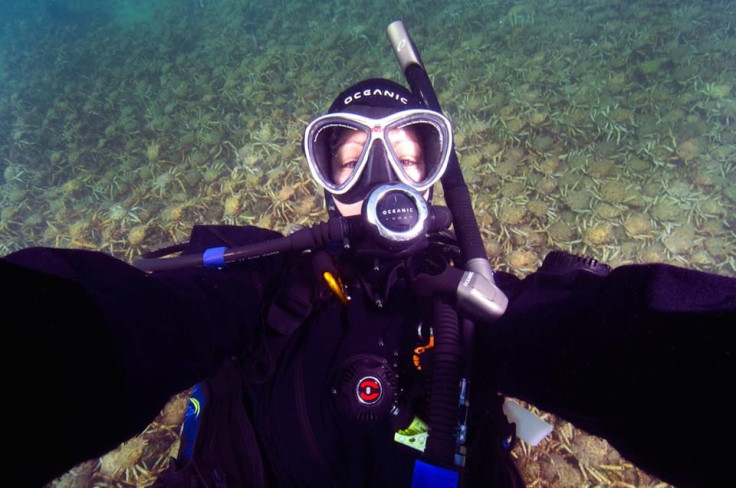Marine scientist films massive gathering of giant spider crabs on Australian shores [VIDEO]

Victoria-based aquatic scientist Sheree Marris came across a unique sight while scuba diving off Melbourne. She filmed what was a giant spider crab aggregation on the shores of Port Phillip Bay. The “spectacular” sight of giant spider crabs gathering up in Australian waters was a unique experience for the marine scientist as she had never seen something like this before.
“What I found really interesting about this aggregation is I've never seen so many before. I swam in a straight line for four-and-a-half minutes and the crabs were thick on the sandy shallows. It was gobsmackingly amazing. [In previous years] I've swam maybe a minute-and-a-half to two minutes and [this year] I wasn't going slow. It's pretty awesome,” Marris told the ABC.
However, marine research biologist Dr. Julian Finn from Museum Victoria said that due to little research available on the crustaceans, it is hard to estimate the number of giant spider crabs coming to Port Phillip Bay and the reason why the crabs chose to aggregate like the way they have. He said that “it is fantastic what is happening” and people must go and see.
Marris pointed out that that aggregation may allow the crabs to moult with “safety in numbers.” When crabs moult, their bodies turn soft making them vulnerable to predators such as sharks and rays.
Moreover, they need to go through a process of shedding their old shells to grow a new one. This process is extremely hard and hence they aggregate to reduce their chances of being eaten. The new shell takes time to harden up and hence the crabs prefer to remain in the shallow waters.
“People think Port Phillip Bay's a marine wasteland … but this is really unique and it's really spectacular. Not only is [Melbourne] the most liveable city above the water, it is also the most liveable below the water,” Marris told BBC News.
Marris described the crab aggregation as “a moving blanket of legs and claws.” There is no hierarchy how the crabs pile up on top of each other, maximum 10 at a time. Environmental and biological cues determine the moulting process. The video shows where the crabs start moulting.
“What happens is when one starts moulting, it sets off a chain reaction and then you'll get these massive moults. At the end of the video, you can see where they do start moulting. Some people freak out when they do start seeing [what they think has been] a mass death of crabs,” Marris said.
Watch Creepy Giant Spider Crab Aggregation here.
Source: YouTube/The Nature of Science





















